02.第二階段、實戰Java高併發程式設計模式-2.併發基礎
阿新 • • 發佈:2019-10-01
什麼是執行緒
執行緒的基本操作
守護執行緒
執行緒優先順序
基本的執行緒同步操作
-
什麼是執行緒
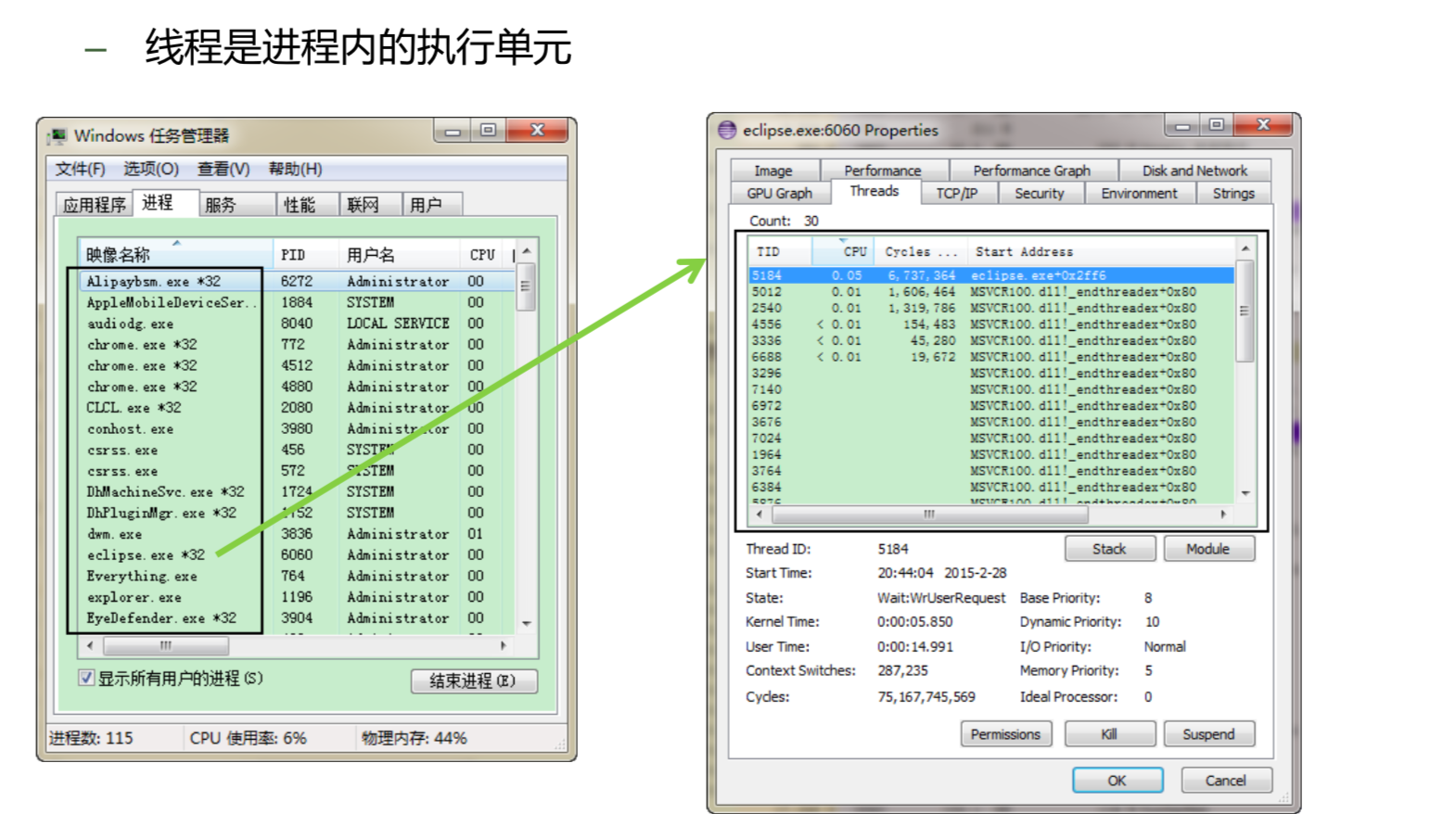
-
執行緒的基本操作
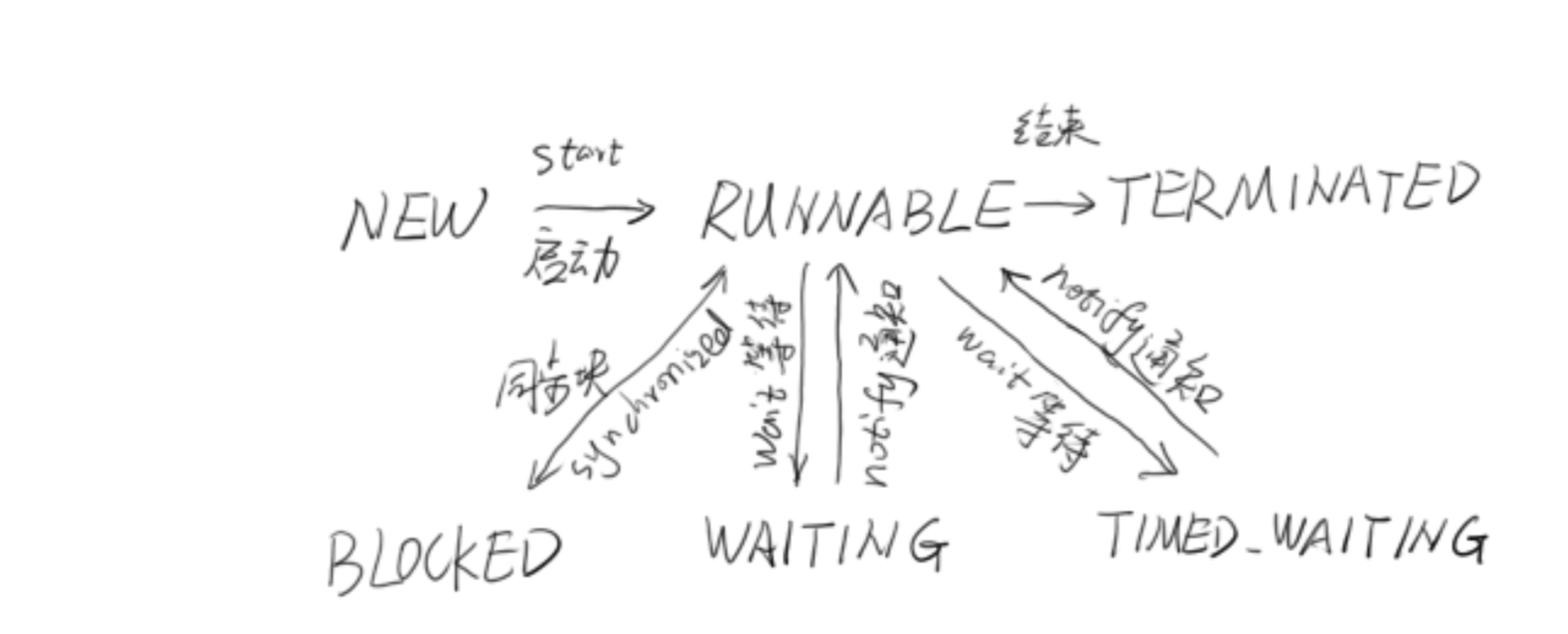
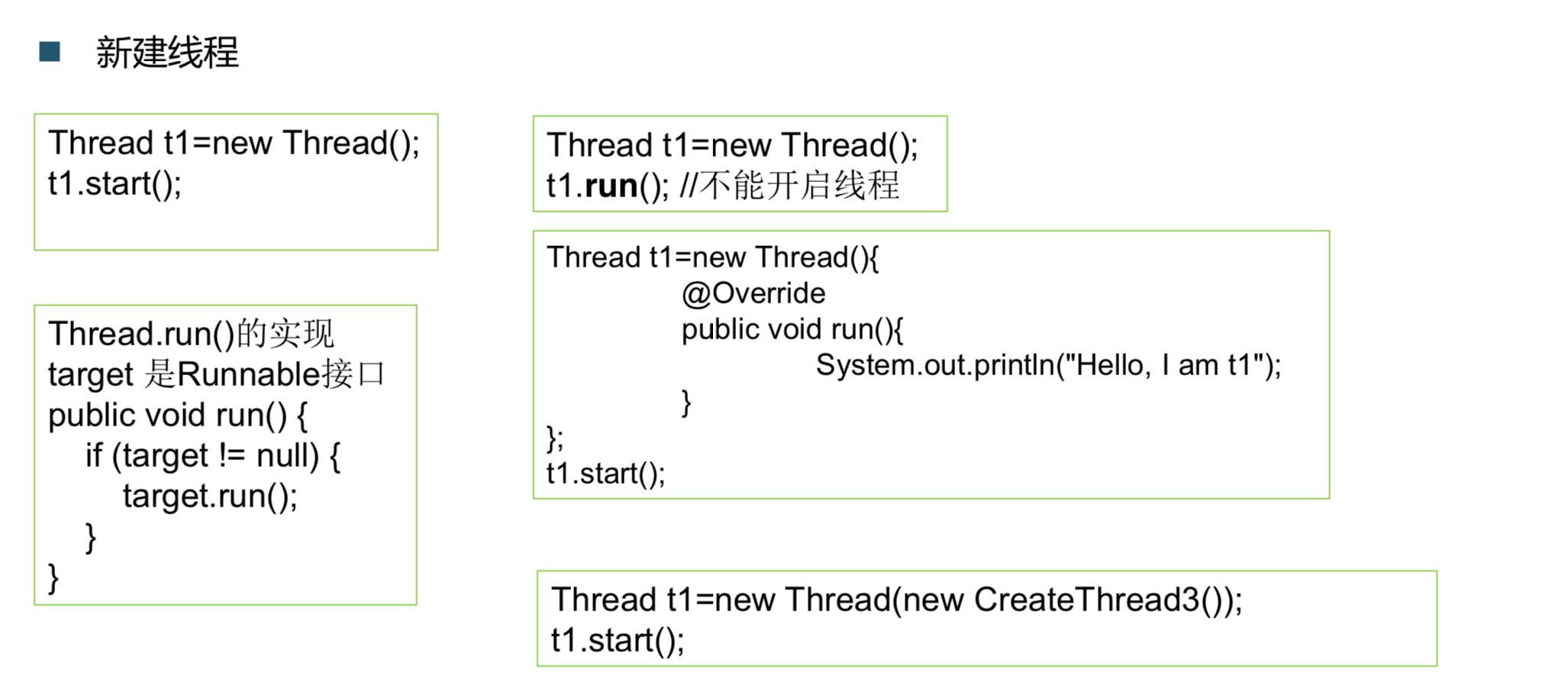
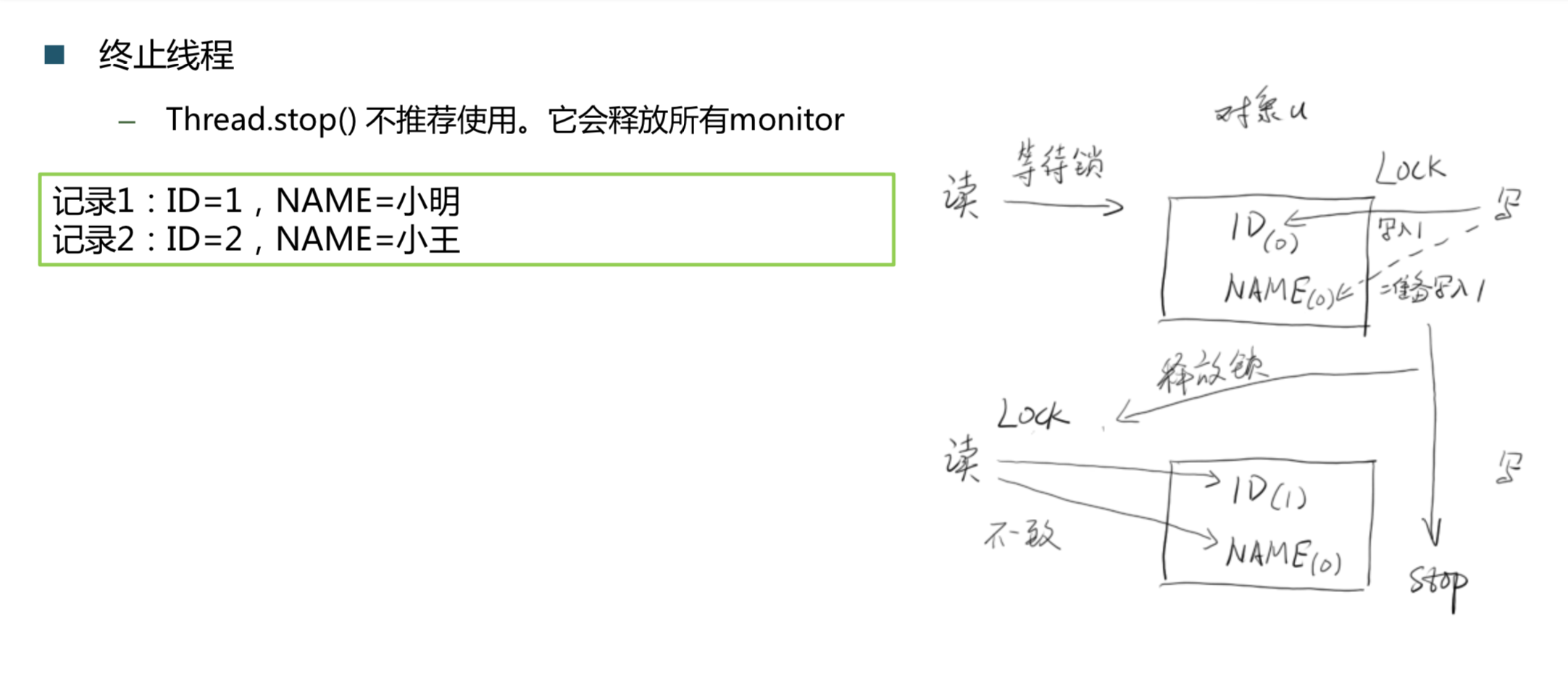
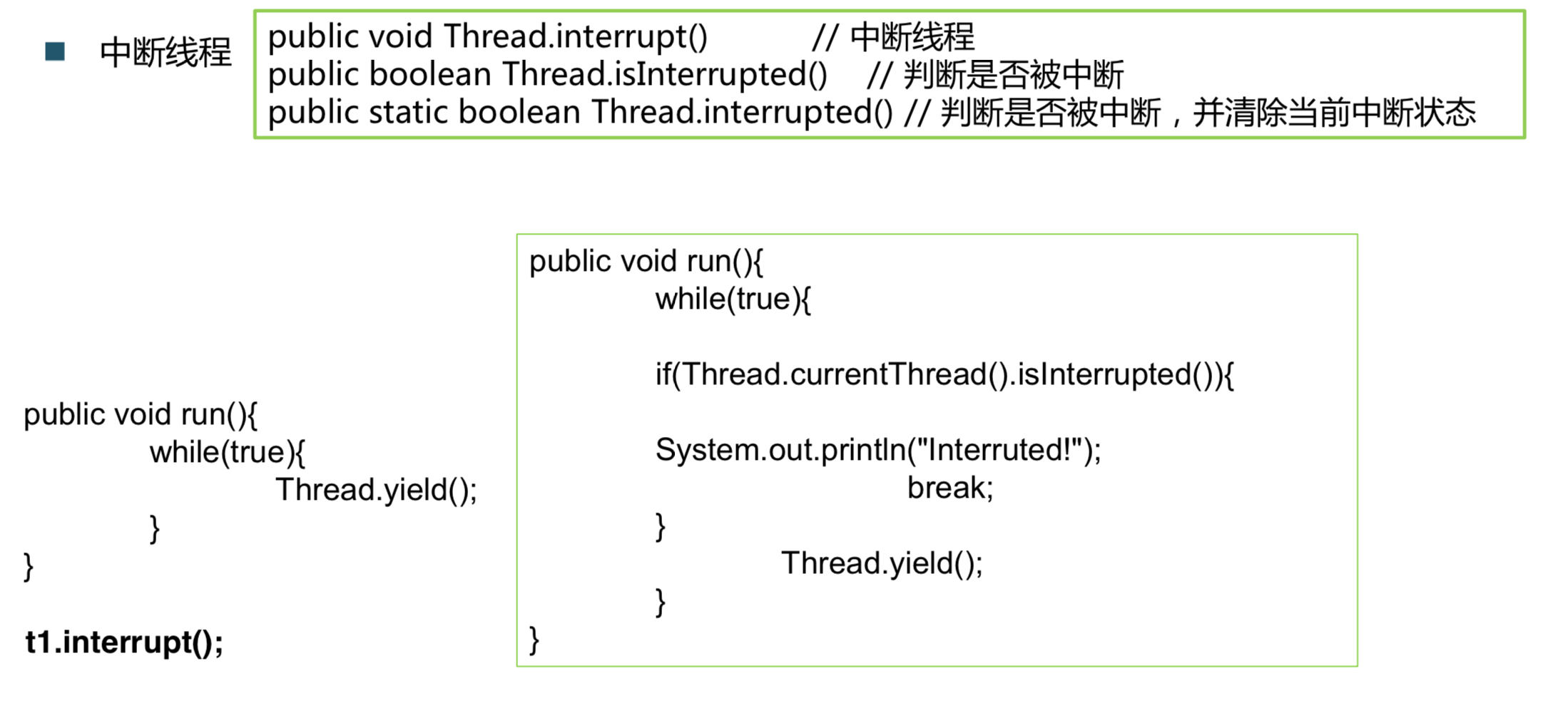
-
執行緒中斷
public static native void sleep(long millis) throws InterruptedException public void run(){ while(true){ } } if(Thread.currentThread().isInterrupted()){ System.out.println("Interruted!"); break; } try { Thread.sleep(2000); } catch (InterruptedException e) { System.out.println("Interruted When Sleep"); //設定中斷狀態,丟擲異常後會清除中斷標記位 Thread.currentThread().interrupt(); } Thread.yield();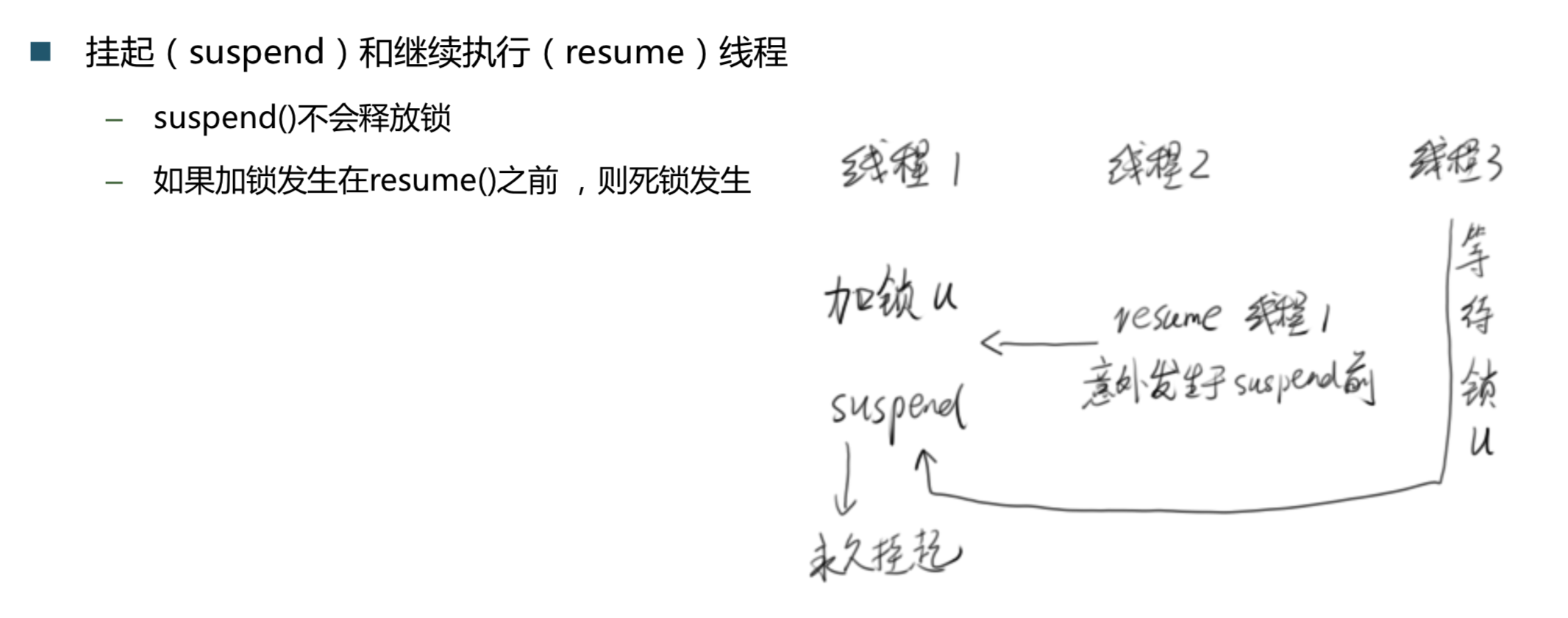
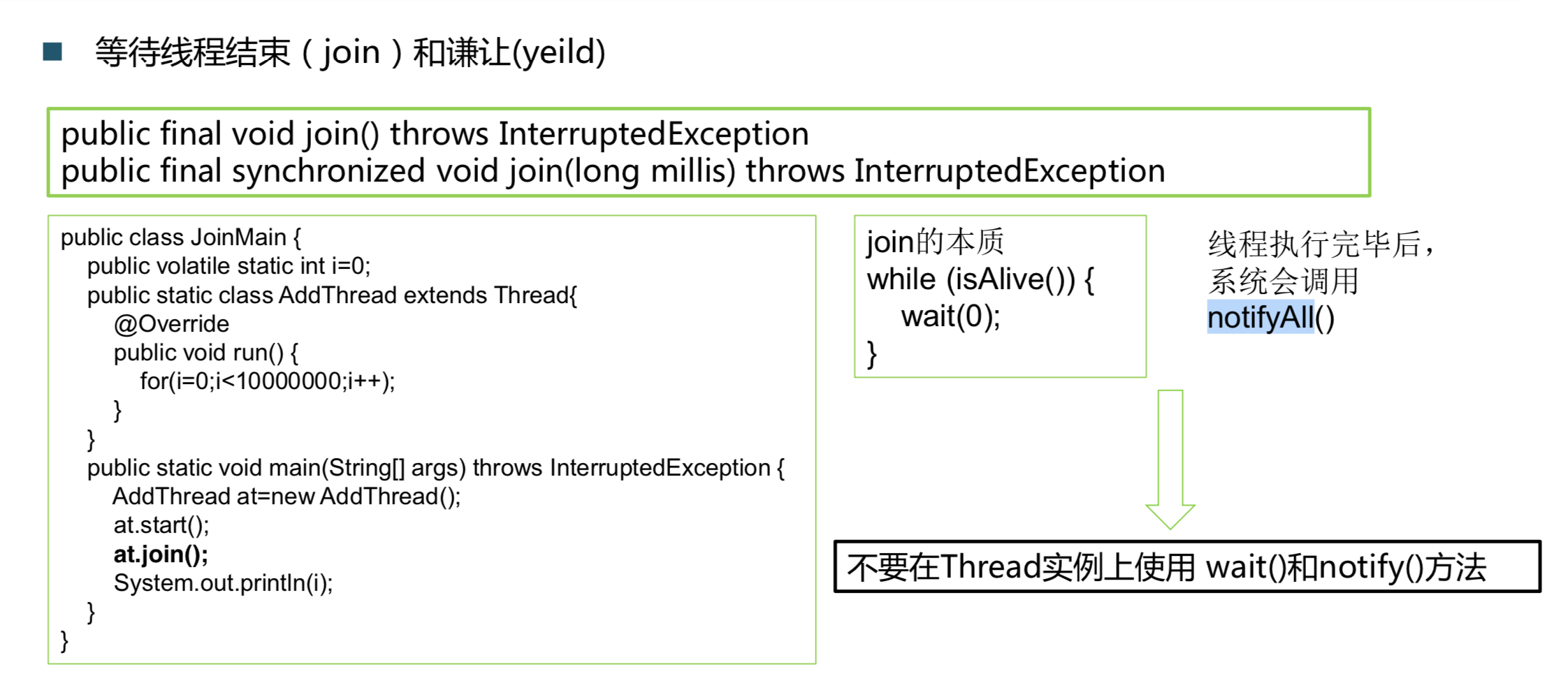
-
守護執行緒

-
執行緒優先順序
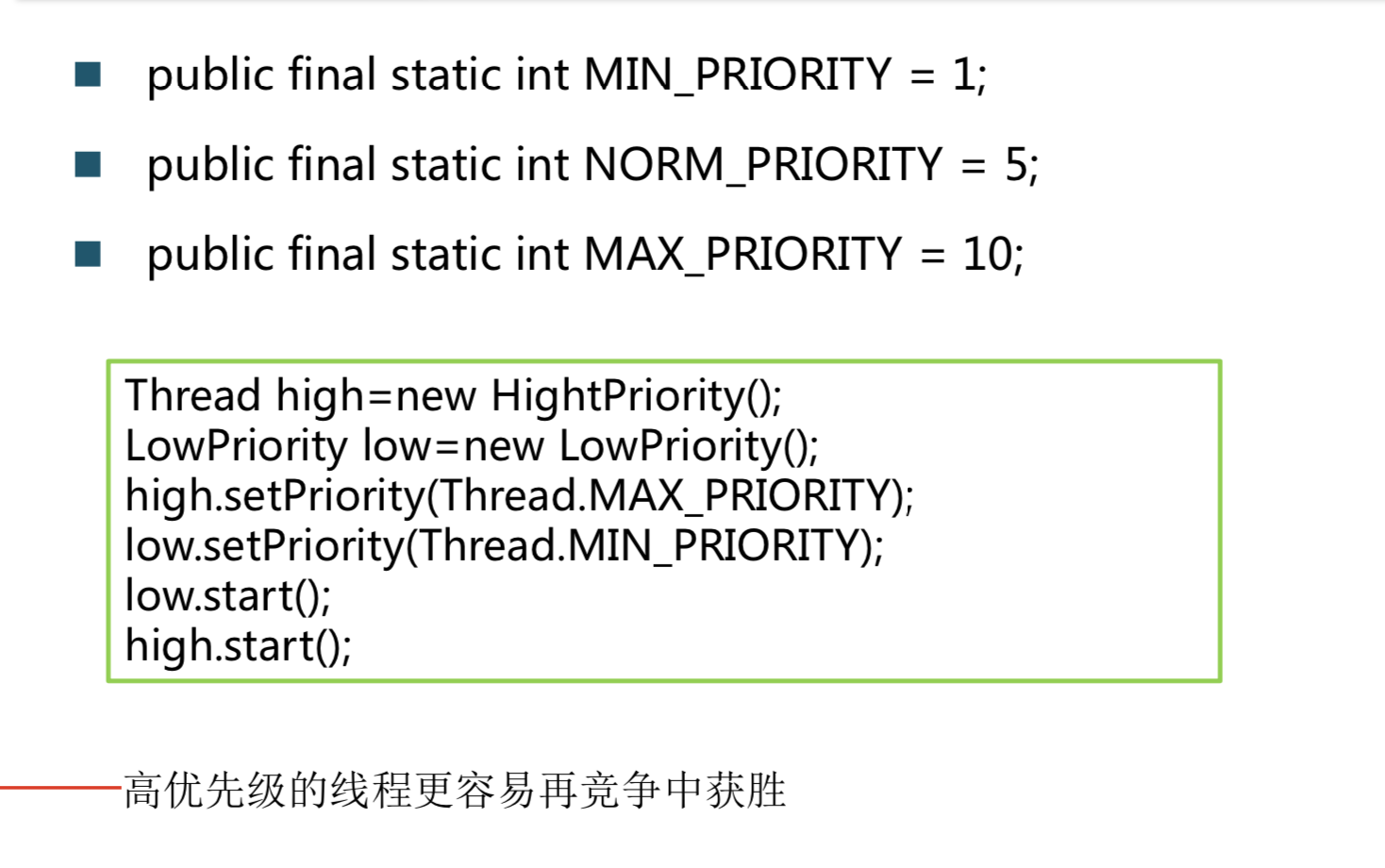
-
執行緒同步



public class ThreadTest { public static Object object = new Object(); public static class T2 extends Thread { public void run() { synchronized (object) { System.out.println(System.currentTimeMillis() + ":T2 start! notify one thread"); object.notify(); System.out.println(System.currentTimeMillis() + ":T2 end!"); try { Thread.sleep(2000); } catch (InterruptedException e) { } } } } public static class T1 extends Thread { public void run() { synchronized (object) { System.out.println(System.currentTimeMillis() + ":T1 start! "); try { System.out.println(System.currentTimeMillis() + ":T1 wait for object "); object.wait(); } catch (InterruptedException e) { e.printStackTrace(); } System.out.println(System.currentTimeMillis() + ":T1 end!"); } } } public static void main(String[] args) { T1 t1 = new T1(); t1.start(); T2 t2 = new T2(); t2.start(); } }
